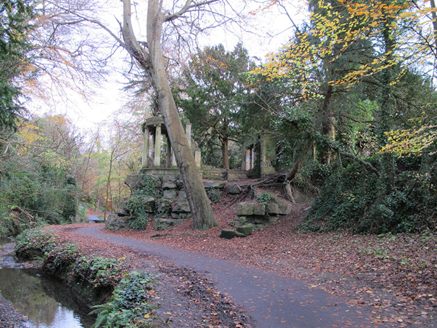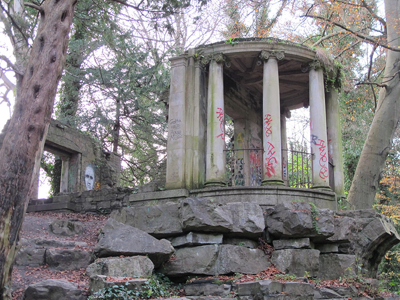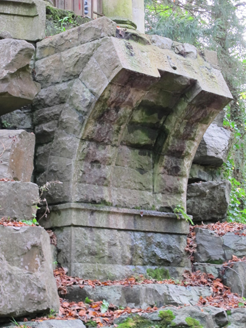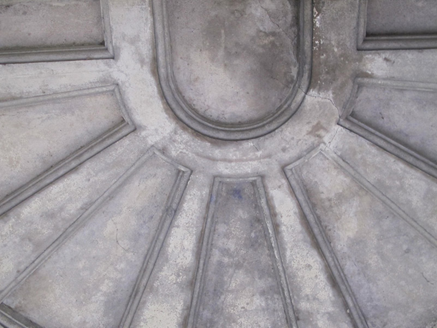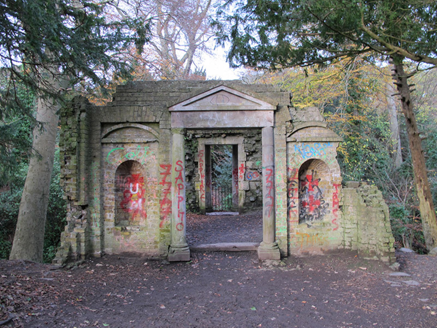Survey Data
Reg No
50030024
Rating
Regional
Categories of Special Interest
Architectural, Artistic, Historical, Social
Previous Name
St Anne's
Original Use
Folly
In Use As
Folly
Date
1840 - 1860
Coordinates
321802, 237261
Date Recorded
24/11/2014
Date Updated
--/--/--
Description
Detached temple folly, built c. 1850, comprising semi-circular-plan hexastyle Ionic portico adjoining walls of single-bay room to south. Now partially ruinous. Flat concrete roof to temple, with cut limestone architrave and frieze with remains of carved stone wreaths and swags, supported on carved Ionic columns on carved granite plinth wall with wrought-iron railings between columns. Cut limestone wall to interior of temple. Yellow brick, laid in Flemish bond, to walls to rear, cut limestone pilasters, recessed panels to south elevation of outer wall having round-headed niches and segmental brick pediments. Pedimented cut limestone doorcase to outer wall, with square-headed doorcase to inner wall with cut limestone surround. Remains of arch of bridge spanning from north elevation to base of tower, with rusticated limestone spandrels, voussoirs and soffit, and carved limestone impost.
Appraisal
This striking temple folly originally housed a bronze statue of a Roman soldier which had been excavated from Herculaneum, buried under volcanic ash emitted by the eruption of Mount Vesuvius in 79 A.D. The temple itself apparently replicated a Herculanean dwelling, and also the Temple of the Sibyl in Tivoli. The Temple of the Sibyl was perched on a steep hill overlooking a natural water feature running through a gorge, and inspired many imitations in the nineteenth century. This folly is prominently sited overlooking a pleasant glen through which the Naniken River runs, facilitating pleasing views as well as constituting a conspicuous focal point in the landscape. The cut stonework is well executed, illustrating the artisanship involved in its construction. Benjamin Lee Guinness and his brother Arthur bought Thornhill Estate in 1835, renaming it St. Anne's after the holy well adjacent to the Naniken River. The estate was considerably expanded by both Benjamin and his successor, Arthur Edward Guinness (Lord Ardilaun). Benjamin Lee undertook extensive landscaping work, with the construction of several classical and rustic follies to enhance the gardens.
